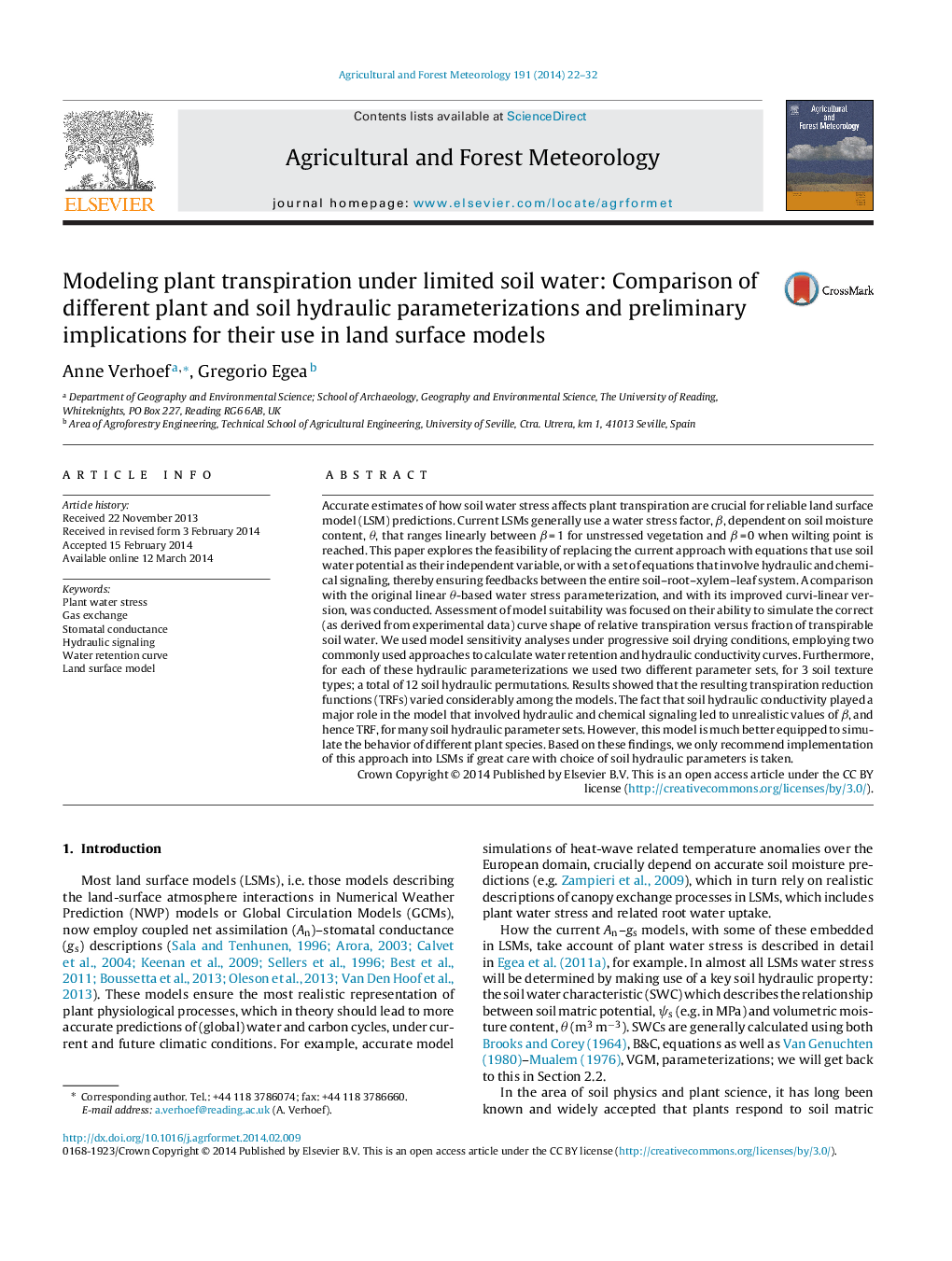| کد مقاله | کد نشریه | سال انتشار | مقاله انگلیسی | نسخه تمام متن |
|---|---|---|---|---|
| 6537604 | 158338 | 2014 | 11 صفحه PDF | دانلود رایگان |
عنوان انگلیسی مقاله ISI
Modeling plant transpiration under limited soil water: Comparison of different plant and soil hydraulic parameterizations and preliminary implications for their use in land surface models
ترجمه فارسی عنوان
تعرق گیاه مدل سازی در آب های محدود آب: مقایسه پارامترهای مختلف هیدرولیکی گیاه و خاک و مقدمات اولیه برای استفاده از آنها در مدل های سطح زمین
دانلود مقاله + سفارش ترجمه
دانلود مقاله ISI انگلیسی
رایگان برای ایرانیان
کلمات کلیدی
استرس آب گیاه تبادل گاز، هدایت دهان، سیگنالینگ هیدرولیک، منحنی احتباس آب، مدل سطح زمین،
موضوعات مرتبط
مهندسی و علوم پایه
علوم زمین و سیارات
علم هواشناسی
چکیده انگلیسی
Accurate estimates of how soil water stress affects plant transpiration are crucial for reliable land surface model (LSM) predictions. Current LSMs generally use a water stress factor, β, dependent on soil moisture content, θ, that ranges linearly between β = 1 for unstressed vegetation and β = 0 when wilting point is reached. This paper explores the feasibility of replacing the current approach with equations that use soil water potential as their independent variable, or with a set of equations that involve hydraulic and chemical signaling, thereby ensuring feedbacks between the entire soil-root-xylem-leaf system. A comparison with the original linear θ-based water stress parameterization, and with its improved curvi-linear version, was conducted. Assessment of model suitability was focused on their ability to simulate the correct (as derived from experimental data) curve shape of relative transpiration versus fraction of transpirable soil water. We used model sensitivity analyses under progressive soil drying conditions, employing two commonly used approaches to calculate water retention and hydraulic conductivity curves. Furthermore, for each of these hydraulic parameterizations we used two different parameter sets, for 3 soil texture types; a total of 12 soil hydraulic permutations. Results showed that the resulting transpiration reduction functions (TRFs) varied considerably among the models. The fact that soil hydraulic conductivity played a major role in the model that involved hydraulic and chemical signaling led to unrealistic values of β, and hence TRF, for many soil hydraulic parameter sets. However, this model is much better equipped to simulate the behavior of different plant species. Based on these findings, we only recommend implementation of this approach into LSMs if great care with choice of soil hydraulic parameters is taken.
ناشر
Database: Elsevier - ScienceDirect (ساینس دایرکت)
Journal: Agricultural and Forest Meteorology - Volume 191, 15 June 2014, Pages 22-32
Journal: Agricultural and Forest Meteorology - Volume 191, 15 June 2014, Pages 22-32
نویسندگان
Anne Verhoef, Gregorio Egea,
